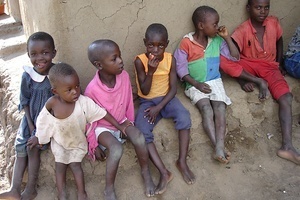Strong advocacy needed to eliminate TB as a major killer of children
A new paper outlining the pressing need for more advocacy efforts to address childhood TB has been published in the European Respiratory Journal.
The paper, “Childhood Tuberculosis: Progress Requires Advocacy Strategy Now, is the product of joint collaboration between the European Centre for Disease Control, members of the Stop TB Partnership’s subgroup on childhood TB and members and participants of the International Childhood TB Meeting that took place in Stockholm in March of last year.
Although a preventable and curable disease, TB makes up a considerable burden of disease affecting children. Even so, children are often left out of National TB Control Programmes because they tend to be less infectious than adults due to the fact that children are more likely to have TB in places other than in their lungs (e.g. TB in the lymph nodes). Because of this, children are also much more difficult to diagnose. TB diagnosis usually occurs by taking a sputum sample from the patient to examine under the microscope for the TB bacteria. However, because children aren’t as likely to get pulmonary TB (TB in the lungs), their sputum samples won’t necessarily show that they have TB. In addition, it is extremely difficult to get a sputum sample from a child as they tend to swallow their sputum rather than to cough it up. We desperately need diagnostic tools that can more accurately detect TB in children.
There are no specific TB treatment options available for children. Children were historically excluded from TB drug studies, meaning adult treatment regimens have to be adjusted to use for children. Due to a lack of child-friendly drug formulations, children have to take up to 15 pills a day, every day for six to nine months. Sometimes doctors will crush adult tablets and estimate the doses for children, meaning children are potentially being over- or under-dosed.
We also need a new vaccine to protect children from TB. The current vaccine, the BCG, only protects against severe forms of TB, like TB meningitis, but does not provide protection against pulmonary TB. In addition, the vaccine’s effects usually wear off by adolescence, meaning it does not provide life-long protection. Furthermore, due to their weakened immune systems, the TB vaccine cannot be given to children who are HIV positive. There is an urgent need for new vaccines that are more effective and safe for people who are HIV positive.
Failing to deal with childhood TB cases means failing to address a reservoir of infection for future TB cases. We need strong advocacy to ensure that childhood TB does not remain a neglected issue.


